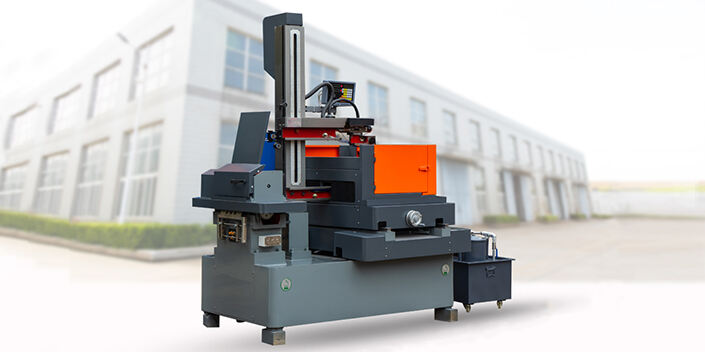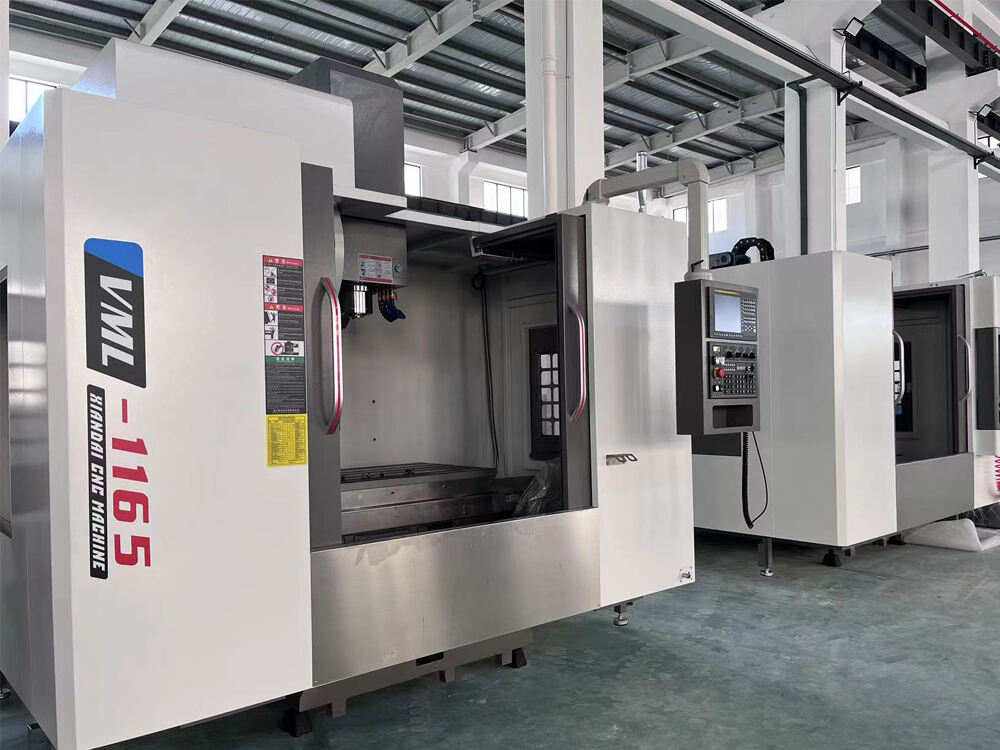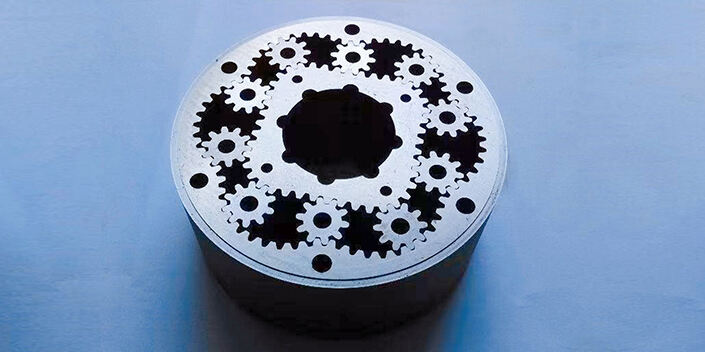Understanding Lathe Components and Machine Rigidity
Key Components and Anatomy of a Metal Lathe
When talking about how a metal lathe works, there are basically four main parts that make it all happen: headstock, bed, carriage, and tailstock. Think of the bed as the backbone of the machine since it provides that solid base needed for accurate machining jobs. Sitting right on top of this bed is where we find the headstock, which contains both the spindle and motor that spin the material being worked on at different speeds depending on what needs doing. Then there's the carriage part, attached with a tool post so it can slide back and forth across the bed to get those cutting tools positioned just right. And finally, don't forget about the tailstock either! This component comes in handy when dealing with longer pieces of material or when someone wants to do some drilling operations too.
Function and Interaction of Headstock, Bed, Carriage, and Tailstock
The spindle on the headstock attaches right to those chucks or collets that hold the workpiece in place. When this spindle spins around, it makes the carriage move back and forth along the machine bed's guiding surfaces. This movement allows for very accurate lengthwise cutting operations. At the same time, workers can adjust the tailstock position depending on what needs doing next. Maybe they want to drill a hole, maybe bore something out, or just stabilize long thin parts during machining. All these moving parts working together basically guarantee even material takeoff rates and consistent dimensions across all pieces being worked on.
How Lathe Rigidity Impacts Precision in Metal Turning
The stiffness of a lathe has a big impact on how accurately it can machine parts. When the machine frame is solid, it doesn't bend much under cutting pressure, which means less tool chatter and fewer vibrations in the workpiece itself. Some research looked at different lathe designs and noticed something interesting about machines built with stronger beds. These models actually cut down on surface imperfections by around 34 percent compared to standard ones. Getting everything lined up right matters too. The tailstock needs to sit just so relative to where the spindle spins. This alignment makes all the difference when working on parts that need extremely close tolerances, particularly those used in aerospace manufacturing where even tiny deviations can be problematic.
Safe Operation Practices for Metal Lathe Users
Fundamental Safety Practices in Lathe Operation
Before turning on any lathe, check that everything's set right and the piece being worked on is securely fastened. Stand with three points of contact against the machine for balance, and absolutely stay clear of anything that spins while it's running. Safety rules from OSHA say workers need to take off rings and watches, tie back hair if it's long, and wear snug fitting clothes instead of anything flappy that might get caught in those spinning parts. Think about this too: around 11 percent of all accidents in machine shops involve lathes, based on numbers from NIOSH in their 2023 report. Keep the area around the machine spotless without those sharp metal shavings lying around or pools of coolant making things slippery. A messy floor isn't just dangerous, it slows down production time as well.
Personal Protective Equipment and Machine Guarding Protocols
Workers must wear certain personal protective equipment while operating machinery. This includes safety glasses rated by ANSI standards with those important side shields, ear protection whenever there's continuous noise over 85 decibels, and gloves that fit snugly with grippy palm surfaces. For chuck guards, we need transparent polycarbonate ones that comply with ANSI B11.6-2021 regulations. These guards should stay shut whenever the spindle is spinning around. Most newer lathes actually come equipped with interlock mechanisms now. What these do is stop the machine from starting up at all if any guard panels are left open, which makes sense since nobody wants accidents caused by missing coverings.
Common Hazards and How to Avoid Them During Turning Operations
About one third of all lathe accidents happen when rotating workpieces get tangled up, according to OSHA data from last year. To avoid these kinds of problems, make sure the chucks are balanced right and check that the tailstock is aligned properly before starting any drilling work. For those working with longer shafts, it's smart practice to place steady rests along the length every four times the diameter of what's being worked on. This helps keep things stable and prevents unwanted whipping motion during operation. And remember to take out those chuck keys as soon as adjustments are done! Leaving them in there leads to roughly a fifth of ejection injuries reported in manufacturing facilities across the country.
Workholding, Tooling, and Setup for Optimal Turning Results
Setting up the workpiece and cutting tool correctly
Getting the workpiece and tools set up right is absolutely critical for any precision lathe work. Most shops aim to get that workpiece aligned within about 0.001 inches of the spindle axis, then clamp it down just tight enough to hold without causing stress points. This simple step can cut down on those annoying vibration issues that mess up tolerances by roughly 30-35% according to Makera's findings last year. When it comes to cutting tools, mechanical preloading really helps prevent them from bending out of shape during those heavy cuts. And speaking of tooling, there was this interesting CNC workholding study that came out recently showing how picking the right toolholders makes a huge difference in surface finish quality too. Some shops reported improvements around 40% better consistency after switching to properly matched holders.
Chucking methods: 3-jaw vs. 4-jaw chucks and collet systems
Three-jaw chucks provide rapid centering for symmetrical workpieces, while four-jaw variants allow precision adjustment for irregular shapes. Collet systems excel in high-speed applications, maintaining concentricity below 0.0005" for diameters under 2".
Choosing the right cutting tool material (HSS, carbide, ceramics)
High-speed steel (HSS) offers versatility for intermittent cuts, carbide handles hardened alloys above 45 HRC, and ceramic inserts withstand temperatures exceeding 1,200°F in continuous machining.
Tool geometry and its impact on chip formation and surface finish
Optimize rake angles between 6°-12° for efficient chip flow in steel turning, while tighter clearance angles (4°-6°) improve edge strength for titanium alloys. Proper nose radius selection (0.015"-0.030") reduces surface roughness by 28% in finishing passes.
Core and Advanced Lathe Operations for Precision Work
Basic Lathe Operations: Facing, Turning, Drilling, and Boring
Lathe work rests on four core techniques that every machinist needs to know. Facing cuts create those nice flat surfaces at the end of workpieces, while turning operations reduce diameter sizes. Drilling makes those straight through holes along the axis, and boring comes into play when we need to enlarge already existing holes. Getting good at these basics means paying attention to how tools are aligned relative to the workpiece, plus knowing what cutting angles work best for different materials. In real shop environments, skilled operators routinely hit tolerances below 0.001 inches by carefully controlling feed rates and keeping the spindle speeds properly synchronized throughout the cut. This level of precision isn't magic though it takes practice and understanding of how all these factors interact during actual machining operations.
Step-by-Step Process for Achieving Dimensional Accuracy
Precision begins with verifying workpiece concentricity using dial indicators, followed by setting cutting tools at exact center heights. Operators perform incremental test cuts, measuring results with micrometers after each pass. Digital readout systems enable real-time adjustments, reducing human error by 62% compared to manual methods (International Journal of Advanced Manufacturing, 2023).
Advanced Techniques: Taper Turning, Contouring, and Precision Threading
Specialized operations expand lathe capabilities - taper turning creates angled profiles using compound slides or CNC programming, while contouring employs form tools for complex geometries. Precision threading demands calculated gear ratios and synchronized carriage movement, with fine-finish threads requiring surface speeds below 80 SFM for non-ferrous metals.
Using Steady Rests and Follower Rests for Long Workpieces
Steady rests stabilize shafts exceeding 6:1 length-to-diameter ratios during mid-span machining, while follower rests maintain contact behind cutting tools. Proper alignment prevents harmonic vibration, critical when working with materials like titanium that exhibit high resonance frequencies.
Minimizing Deflection and Maintaining Concentricity in Delicate Operations
Reducing tool overhang by 50% decreases deflection-related errors by 34% (Precision Engineering Society, 2023). Operators combine reduced depth-of-cut strategies with optimized RPM settings, particularly when machining thin-walled components below 0.5mm thickness. Live tooling systems enhance concentricity by eliminating workpiece repositioning between operations.
Optimizing Cutting Parameters and Surface Finish Quality
Spindle Speed Selection Based on Material and Diameter
Getting the right spindle speed means finding a sweet spot between what the material can handle and how big the workpiece is. Steel generally works well at around 100 to 400 RPM, whereas aluminum alloys can take much higher speeds, usually somewhere between 600 and 1200 RPM depending on size. There's actually a basic formula people use: multiply the cutting speed by 4 then divide by the diameter in inches. Cutting speeds themselves vary quite a bit too, starting at about 100 surface feet per minute for tough hardened steels all the way up to 600 SFM for softer aluminum materials. Some recent research published last year indicates that when machinists get this right, they see anywhere from 18% to 32% less tool wear during precision lathe operations.
Balancing Speed, Feed, and Depth of Cut for Efficiency and Tool Life
The cutting parameter triad follows a hierarchy:
- Speed directly impacts heat generation (above 350°F accelerates carbide tool degradation)
- Feed rate controls chip thickness (0.004-0.012" per revolution for finishing cuts)
- Depth of cut should not exceed 30% of insert nose radius for optimal finish
Material-Specific Considerations: Steel, Aluminum, Brass, and Exotic Alloys
| Material | Speed (SFM) | Feed (IPR) | Depth of Cut |
|---|---|---|---|
| Mild Steel | 90-150 | 0.006-0.010" | 0.030-0.125" |
| 6061 Aluminum | 500-1000 | 0.004-0.008" | 0.015-0.060" |
| Inconel 718 | 50-120 | 0.003-0.006" | 0.010-0.040" |
Exotic alloys require flood coolant to maintain <0.0004" surface roughness while preventing work hardening (Precision Machining Report).
Achieving High-Quality Surface Finish and Eliminating Chatter
Three strategies combat chatter in lathe turning:
- Maintain tool overhang <4— shank height
- Use variable-helix tool geometries for harmonic disruption
- Implement tuned mass dampers on long workpieces
A 2024 International Journal of Machine Tools study found micro-textured tool surfaces reduce vibration amplitudes by 42% compared to standard inserts.
Importance of Sharp Cutting Tools, Tool Maintenance, and Cutting Fluid Use
| Tool Condition | Surface Roughness (Ra) | Dimensional Tolerance |
|---|---|---|
| Fresh carbide insert | 16-32 μin | ±0.0002" |
| 15% flank wear | 45-80 μin | ±0.0008" |
| 30% flank wear | 120-250 μin | ±0.0025" |
Regular tool inspection cycles (every 50-200 parts) paired with synthetic cutting fluids reduce thermal deformation by 28% in titanium machining operations.
FAQ Section
What are the main components of a metal lathe?
The main components of a metal lathe are the headstock, bed, carriage, and tailstock. These parts work together to perform machining operations with precision.
How does rigidity affect a lathe's performance?
Lathe rigidity is crucial as it minimizes vibrations and tool chatter, leading to improved precision and surface finish in the machined parts.
What safety measures should be taken when using a lathe?
Operators should wear protective gear, removing rings or loose clothing, and ensure all guards are in place. Keeping the workspace tidy is also essential to prevent accidents.
How can I achieve dimensional accuracy in lathe operations?
Dimensional accuracy can be achieved by verifying workpiece concentricity, setting cutting tools at correct center heights, and using digital readouts for precise adjustments.
What factors influence spindle speed selection?
Spindle speed depends on the material being machined and the diameter of the workpiece. The correct speed reduces tool wear and improves cutting efficiency.
Table of Contents
- Understanding Lathe Components and Machine Rigidity
- Safe Operation Practices for Metal Lathe Users
- Workholding, Tooling, and Setup for Optimal Turning Results
-
Core and Advanced Lathe Operations for Precision Work
- Basic Lathe Operations: Facing, Turning, Drilling, and Boring
- Step-by-Step Process for Achieving Dimensional Accuracy
- Advanced Techniques: Taper Turning, Contouring, and Precision Threading
- Using Steady Rests and Follower Rests for Long Workpieces
- Minimizing Deflection and Maintaining Concentricity in Delicate Operations
-
Optimizing Cutting Parameters and Surface Finish Quality
- Spindle Speed Selection Based on Material and Diameter
- Balancing Speed, Feed, and Depth of Cut for Efficiency and Tool Life
- Material-Specific Considerations: Steel, Aluminum, Brass, and Exotic Alloys
- Achieving High-Quality Surface Finish and Eliminating Chatter
- Importance of Sharp Cutting Tools, Tool Maintenance, and Cutting Fluid Use
- FAQ Section





